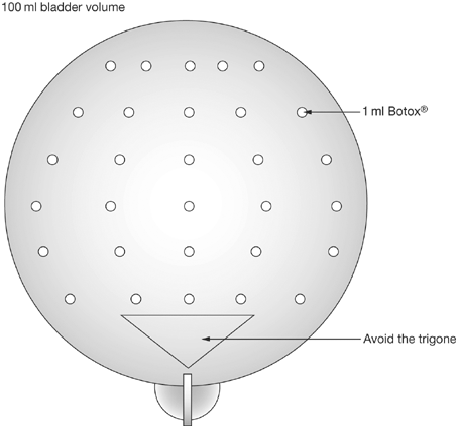Botox injections for the bladder

Botulinum toxin is a neurotoxic drug safely used for the past 20 years to control various muscular disorders of a neurological origin. It is licensed for use in treating muscle spasms (in the neck and shoulders as well as eyelid and face), excessive sweating of the armpits and also foot deformities in children with cerebral palsy. It has been shown to be useful in the treatment of spasticity, visual squints and some digestive tract problems. Botulinum toxin is not yet licensed for use in the bladder. However, in recent years physicians in both Europe and America have reported its successful use in the treatment of bladder overactivity, which is one of the commonest causes of urinary incontinence.
200-300 units of Botulinum toxin are injected into the bladder using a bladder telescope (fibre-optic cystoscope). About 20 separate injections are used. After the procedure patients sometimes notice a little blood in the urine, but generally the treatment is well tolerated. Antibiotics are given before the procedure to minimise the risk of infection. Properly screened patients should have about an 80-90% chance of enjoying a significant improvement to their symptoms.

Botulinum toxin is a very safe product, but as with any drug there may be side effects. In studies, less than 1% of patients have complained of a rash, a transient flu-like illness and drowsiness. There have been two reported cases in the literature of muscle weakness in the legs following treatment. There is also a small risk of needing to empty the bladder by catheterising yourself intermittently.

